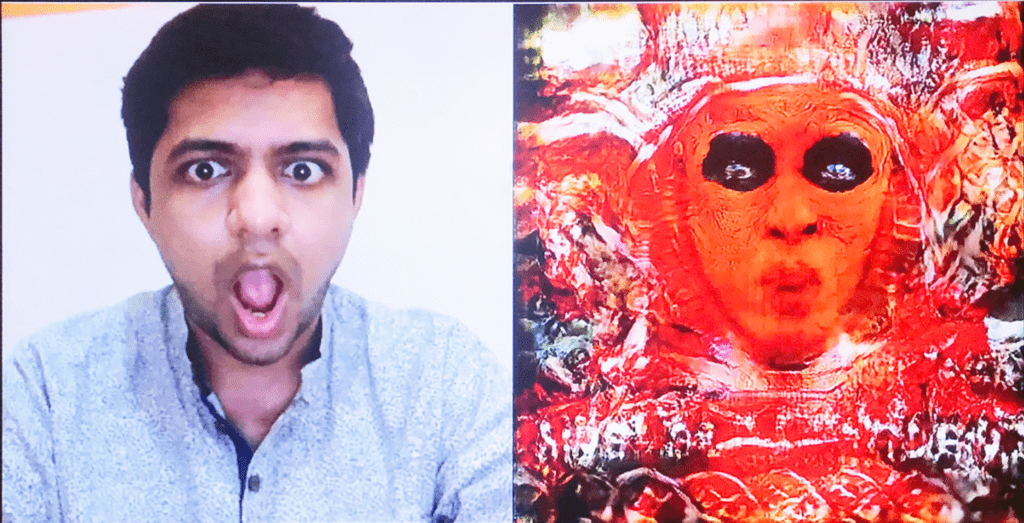Artist Statement
Keywords: AI Art, Deep Learning, Creativity-continuum, Culture
Over the last 5-6 years, there has been a strong resurgence in artificial intelligence (AI) art. Through this talk, I want to talk about this new form of art. While artists and researchers have long tried to create art with autonomous systems (e.g. AARON [3]), I refer to this as a new form because of the use of certain specific techniques today for creating AI art, using algorithms relying on deep learning. I call this the evolution of the cyborg artist, because I agree with the argument of us being naturally born cyborgs [1], and I see the capabilities of deep learning to do ‘imaginative’ tasks by understanding patterns in large datasets as a direct evolution of how we will continue to think about and make art. With AI, I’m particularly interested in the creativity-continuum between humans and machines, where the human continuously adapts to how technology responds to their intentions, and for part of the art process, the creative agency is transferred to the machine.

- Harshit Agrawal (India) is a new media artist and researcher whose current work focuses primarily on the interplay between human and artificial intelligence, imagination and intention, spanning across virtual and physical embodiments. Harshit is a graduate of the MIT Media Lab and the Indian Institute of Technology. He has carried out art residencies at various places to develop my practice in diverse cultural contexts. He has exhibited work at premier art festivals and museums around the world, like the Ars Electronica Festival, permanent exhibition at Heinz Nixdorf Museum, Tate Modern, Asia Culture Center (at Otherly Spaces/Knowledge exhibition), QUT Art Museum, Museum of Tomorrow, Alt-Ai (at the School For Poetic Computation, NYC), Art Center Nabi, Laval Virtual, BeFantastic Festival (Bangalore, India), ISEA. His work has also been extensively covered in international media. Along with this, he has published several research papers on creation tools at human computer interaction conferences.
Full text (PDF)